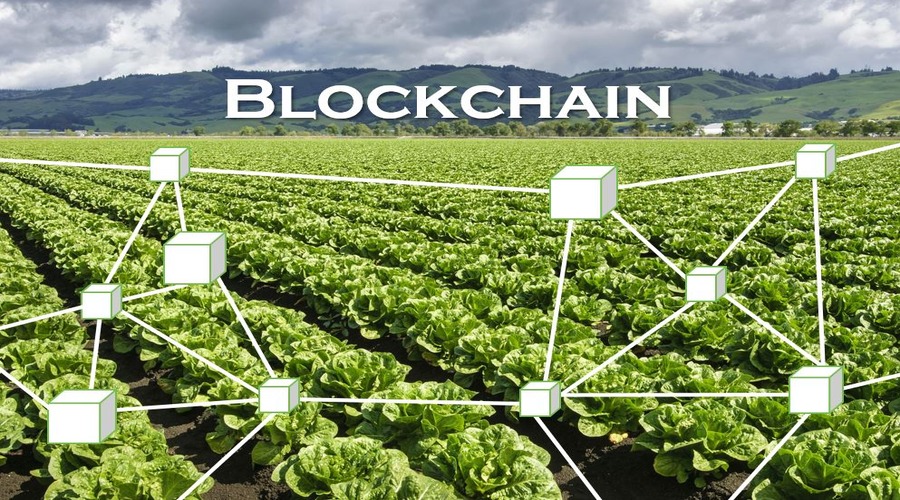The Potential of Blockchain for Food Safety and Traceability

In recent years, food safety and traceability have become critical concerns for consumers and regulators worldwide. The rise of globalization and the complexity of modern food supply chains have made it increasingly challenging to ensure that food products are safe for consumption and produced in an ethical and sustainable manner. This is where blockchain technology can offer a potential solution. In this article, we will explore the potential of blockchain for food safety and traceability.
What is Blockchain Technology?
Blockchain technology is a distributed, decentralized ledger that records transactions securely and transparently. In essence, it is a database that stores information across a network of computers, making it resistant to tampering or manipulation. Each block of data is linked to the previous block, creating a chain of blocks, hence the name blockchain. This technology offers a high level of security, transparency, and immutability, making it an ideal candidate for use in the food industry.
Challenges in the Food Industry
Food safety and traceability are two of the biggest challenges facing the food industry today. Every year, millions of people fall ill, and thousands die due to foodborne illnesses. These outbreaks have not only a human cost but also an economical cost, as they can result in lost revenue, increased healthcare costs, and damage to brand reputation. The lack of transparency and visibility in food supply chains makes it difficult to trace the origin of the contamination and prevent outbreaks.
Another challenge in the food industry is sustainability. Consumers are increasingly concerned about the environmental impact of food production and the ethical treatment of animals. They want to know that the food they are consuming is produced in a sustainable and ethical manner.
How can Blockchain Address The Challenges in Food Safety?
Blockchain technology has the potential to address the challenges in food safety in several ways.
- Transparency and Traceability
Blockchain can provide end-to-end visibility and traceability in the food supply chain, from farm to fork. Each transaction, from the production of raw materials to the final product, can be recorded on the blockchain, creating an immutable and transparent record of the entire process. This can help identify the origin of any contamination, quickly contain outbreaks, and prevent future occurrences.
- Authentication and Verification
Blockchain technology can also be used to authenticate and verify the authenticity of food products. Each product can be assigned a unique identifier, such as a QR code. Consumers can scan that to verify its origin and authenticity. This can help prevent food fraud, such as the mislabeling of products or the sale of counterfeit goods.
- Efficiency and Cost Savings
Blockchain technology can also help improve the efficiency and cost-effectiveness of the food supply chain. By providing a secure and transparent platform for transactions, it can reduce the need for intermediaries, such as brokers and distributors, and streamline the process of moving goods from one point to another. This can result in cost savings for all parties involved, from producers to consumers.
- Sustainability and Ethical Production
Finally, blockchain technology can be used to promote sustainability and ethical production practices in the food industry. By providing end-to-end visibility and traceability, consumers can make informed decisions about the products they purchase and the companies they support. This can incentivize producers to adopt sustainable and ethical practices, as they will be rewarded for doing so.
Case Studies of Blockchain for Food Safety
Several companies and organizations have already started using blockchain technology for food safety and traceability. Here are some examples:
- Walmart
In 2018, Walmart announced that it would require all its suppliers of leafy greens to use blockchain technology to track their products from farm to store. This initiative was launched in response to the E.coli outbreak in 2017 that was linked to romaine lettuce. By using blockchain technology, Walmart can trace the origin of any contaminated products within seconds instead of days or weeks.
- Nestle
Nestle has partnered with IBM to implement blockchain technology in its supply chain. The company uses blockchain to trace the origin of milk used in its products, starting from the dairy farm. By scanning a QR code on the product, consumers can see where the milk came from when it was produced, and how it was transported.
- Bühler
Bühler, a Swiss technology company, has developed a blockchain-based solution called “ChocoGenius” that enables chocolate manufacturers to trace the origin of cocoa beans used in their products. The solution uses a combination of blockchain technology and DNA analysis to verify the authenticity and origin of the beans.
- The World Food Programme
The World Food Programme (WFP) has launched a blockchain-based pilot project in Jordan that provides refugees with food assistance. The project uses blockchain technology to create a transparent and secure platform for distributing food vouchers. The vouchers can be redeemed at participating retailers, and the transactions are recorded on the blockchain, ensuring that the assistance reaches the intended recipients.
Conclusion
Blockchain technology has the potential to revolutionize the food industry addressing some of the biggest challenges facing it today. By providing end-to-end transparency and traceability, blockchain can help prevent foodborne illnesses, promote sustainability and ethical production practices, and provide consumers with the information they need to make informed decisions. While there are still some challenges to overcome, such as the integration of legacy systems and the need for industry-wide adoption, the potential benefits of blockchain for food safety and traceability are too significant to ignore. As more companies and organizations adopt this technology, we can expect to see a safer, more sustainable, and more ethical food industry in the years to come.
I’m a leading crypto author with over 10 years experience in the industry. I have been featured in numerous publications and am a regular speaker at major crypto events. I’m also the founder of Crypto Academy, which is dedicated to providing education on all things crypto.
